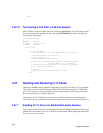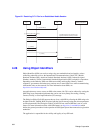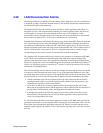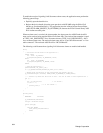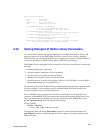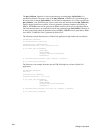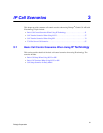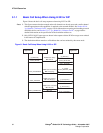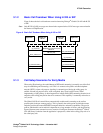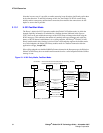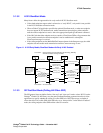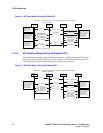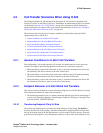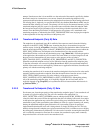
52 Dialogic
®
Global Call IP Technology Guide — November 2007
Dialogic Corporation
IP Call Scenarios
3.1.1 Basic Call Setup When Using H.323 or SIP
Figure 8 shows the basic call setup sequence when using H.323 or SIP.
Notes: 1. This figure assumes that the network and media channels are already open and a media channel
with the appropriate media capabilities is attached to the network channel. See Section 8.3.18,
“gc_OpenEx( ) Variances for IP”, on page 476 for information on opening and attaching network
and media devices and Section 8.3.17, “gc_MakeCall( ) Variances for IP”, on page 460 for
detailed information on the specification of the destination address etc.
2. Only H.225.0 (Q.931) messages are shown in the sequence below. H.245 messages were omitted
in the interest of simplification.
3. The destination address must be a valid address that can be translated by the remote node.
Figure 8. Basic Call Setup When Using H.323 or SIP
Application Application
gc_MakeCall( )
SIP: INVITE
GlobalCall GlobalCall
gc_WaitCall( )
GCEV_DIALING
GCEV_DETECTED
GCEV_OFFERED
gc_CallAck
(GCACK_SERVICE_PROC)
SIP: 100 (Trying)
GCEV_PROCEEDING
GCEV_CALLPROC
gc_AcceptCall( )
SIP: 180 (Ringing)
GCEV_ALERTING
GCEV_ACCEPT
gc_AnswerCall( )
GCEV_ANSWERED
SIP: 200 (OK)
GCEV_CONNECTED
SIP: ACK
H.323: Q.931 Proceeding
H.323: Q.931 Connected
H.323: Q.931 Alerting
H.323: Q.931 Setup



